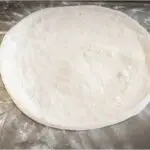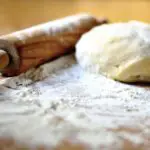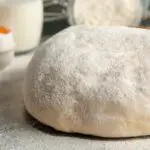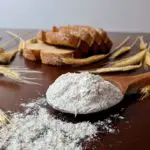One of the more difficult aspects about making bread is the time that it takes up. Whether you’re making pizza dough, cinnamon rolls, or a delicious loaf of crusty bread, the time that it takes for dough to rise can be a large turning off point.
Often, people’s biggest problems with making bread is waiting for the dough to rise. However, sometimes, the opposite is true.
If you have a dough that is rising too quickly, then there are a few troubleshooting options that you can try. Keep reading to find out why your dough is rising too fast, and what you can do to fix it.
Why Does Dough Rise?
To understand how to prevent your dough rising too fast, we first have to understand why dough rises in the first place.
When you mix sugar and active dry yeast, the yeast begins eating the sugar and then burping out carbon dioxide.
The more yeast or the more sugar, the more gas, which in turn gets trapped within the gluten structure of the flour and causes the dough to rise. This is called the fermentation process.
As well as these active ingredients, you also need to make sure that your bread is made using warm water, or even boiling water, because dough needs moisture and warmth in order to rise faster.
If you live in a cold, dry environment, your dough will struggle to rise. On the other hand, if you live in a warm, humid area, your dough will rise quickly.
Why Would Dough Rise Too Fast?
If you have added too much yeast, used instant yeast, or created an incredibly warm and humid environment, then you might find that your dough is rising faster than whatever recipe you were following suggested it would.
Getting the temperature correct can be really difficult, so don’t worry if you don’t manage it on your first batch.
Most recipes state that dough should have doubled in size after about 2 hours, or in the fridge overnight in a glass bowl.
However, if you’ve noticed that it’s rising significantly quicker than this, you need to make sure you’re keeping a close eye on the dough.
What Is Over-Proofing
When we leave dough to rise, we call this “leaving it to proof”. So it stands to reason that if you leave your dough to rise for too long, it is possible to “over-proof” your bread.
This basically means that there is too much carbon dioxide in your bread, and that all of the sugar has been consumed by the yeast.
Because of this, the bread won’t be able to have a final rise in the oven, and will deflate instead.
Sometimes, you’ll find that an over-proofed dough will have a lot less flavor and be a lot denser than you’d want for your bread.
If you find that your dough rises very quickly, you’ll want to make sure that you keep an eye on your dough so that you can prevent it from over-proofing.
How To Tell If Your Dough Is Over-Proofed
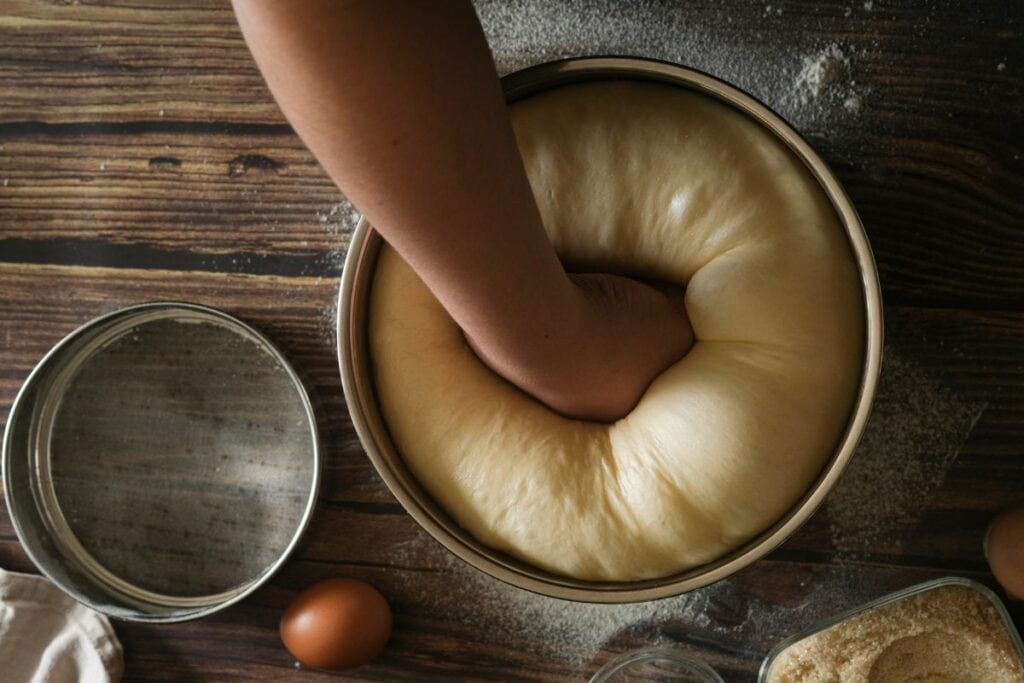
The easiest way to tell whether your dough is over-proofed is to do a simple poke test.
When your dough is under-proofed, it will spring back pretty quickly if it gets poked. This is because the yeast is still creating gases and hasn’t reached its limit just yet – there’s still time to go yet.
Once you poke the dough and it bounces back in slow-motion, then you know that the gas production and fermentation process has slowed right down and the dough is ready to be baked.
However, if your dough is over-proofed, then it won’t spring back at all. If the dough happened to rise faster than you expected, and ended up without enough gases left in the dough for it to go through a final rise in the oven.
Instead of rising again, you’ll find that your dough will rise a little, then collapse in the heat of the oven.
This will leave your bread looking deflated and with an uneven, ragged crumb. Although there won’t necessarily be a noticeable difference in taste, there will definitely be a difference in the aesthetics, which for a lot of people, is half the fun.
How To Make Dough Rise Faster
When you start proofing dough, you might want to try some options that will make the dough rise faster.
Some of these options include proofing the dough in the oven or microwave, adding more yeast or sugar, and making sure things are properly humid.
Proofing In The Oven
There are a few different methods that will help your dough rise quickly in the oven. For example, some ovens actually come with a proof setting, which makes everything a lot easier.
If it doesn’t, then one thing you can try is to turn your oven on to its lowest heat for about 2 minutes then turn it off.
The inside of your oven will have gotten nice and cozy in this time, making it a great place for your dough to rise. Add a small cup of water to the bottom of your oven to maximize the humidity levels.
Finally, leave your oven light on, as these generally give off enough heat to keep the inside of your oven warm.
Use Rapid Rise Yeast
There are several types of yeast that you can use, depending on how you want to make bread. For example, you could use long rise yeast, active dry yeast, or rapid rise yeast.
The first two options typically require at least two rises, potentially even a third if there is still yeast activity.
However, rapid rise yeast dough should be ready to be baked after just the first rise. If you want to streamline the bread-making process, this will probably be the easiest method.
Good Luck
Remember: baking bread properly can feel a lot like waiting on the stars to align. Follow the instructions in your recipe carefully, and use your intuition when cooking bread. And most of all, good luck!

